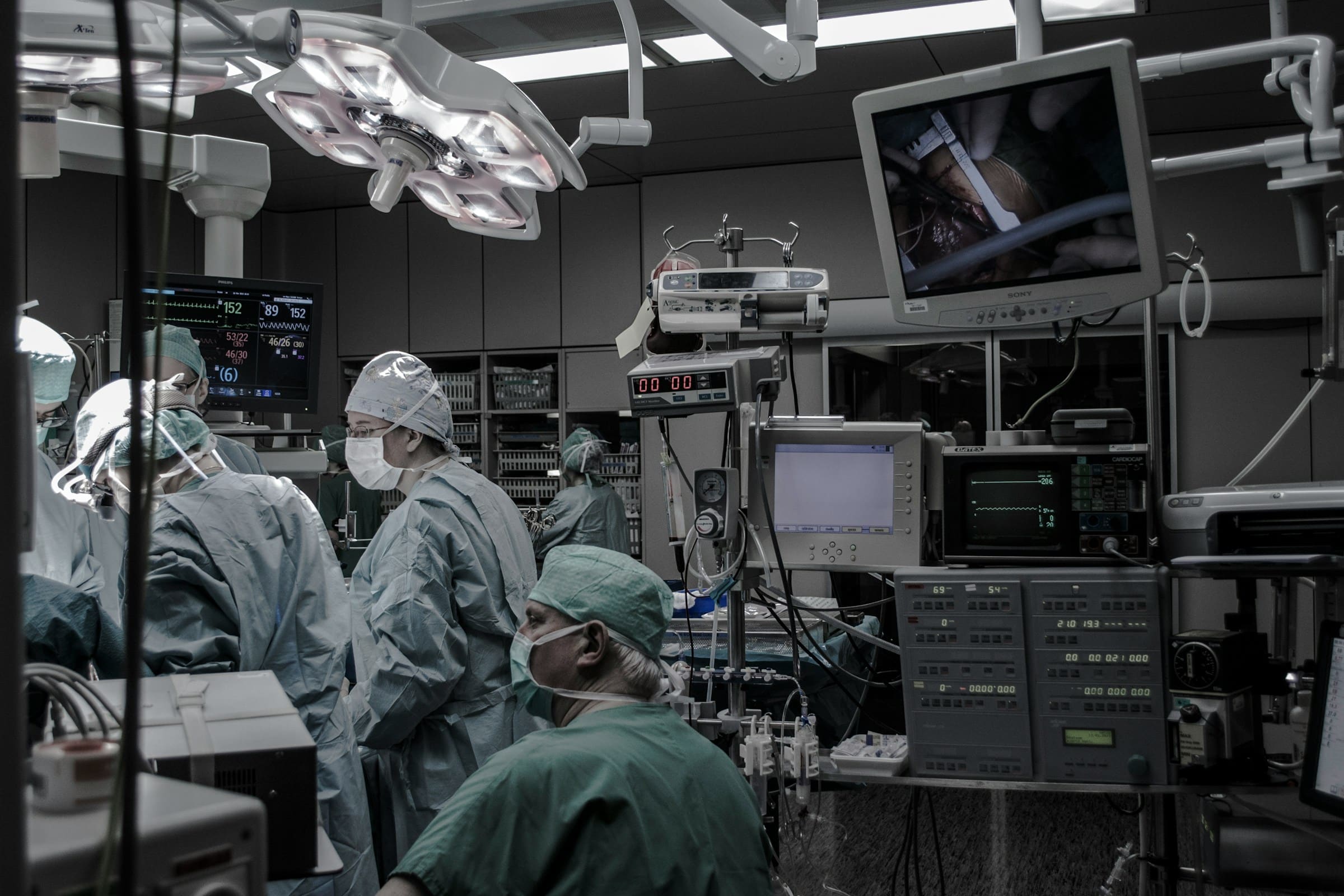As we step into the era of artificial intelligence, machine learning algorithms have begun to find their place in various sectors, including healthcare. One potential application is in enhancing the accuracy of clinical diagnoses, an area that is currently fraught with challenges. But can these algorithms truly bring about significant improvements? UK hospitals serve as an interesting case study to explore this question.
The Current State of Clinical Diagnoses in UK Hospitals
It is necessary first to understand the current scenario. The task of diagnosing a health condition is a complex one, involving intricate analyzes of patient data, including symptoms, medical history, and test results. Mistakes in this process could lead to misdiagnoses, unnecessary treatments, or missed treatments – all of which have significant health implications for patients.
A découvrir également : How to Integrate Blockchain Technology in UK’s Supply Chain for Pharmaceuticals?
Research suggests that diagnostic error rates in UK hospitals range from 10% to 15%. This means that potentially one in ten patients is receiving incorrect treatment or diagnosis – an alarming statistic. Furthermore, these errors are not evenly distributed across all types of diseases. For instance, a study published in the British Journal of Cancer in 2017 reported that up to 50% of cancer patients in the UK are initially misdiagnosed.
This is where artificial intelligence and machine learning algorithms could potentially be a game-changer.
En parallèle : What’s the Potential of Virtual Reality in Streamlining Real Estate Sales?
Machine Learning Algorithms: An Introduction for Healthcare
Machine learning, a subset of artificial intelligence, involves the design and application of algorithms that allow computers to learn from and predict future data based on historical data. In healthcare, these algorithms could help analyze vast amounts of patient data, identifying patterns and trends that might otherwise be missed by human doctors.
Machine learning algorithms are already being used in a range of healthcare applications. Google’s DeepMind Health project, for instance, has demonstrated the ability of AI to predict patient deterioration up to 48 hours before it happens, allowing doctors to intervene early and potentially save lives. Many other tech giants and startups around the world are working on similar projects, with the aim of improving patient care and outcomes.
The Potential of Machine Learning in Clinical Diagnoses
Machine learning algorithms can potentially revolutionize the way clinical diagnoses are made. They can analyze vast amounts of patient data, including genetic information, lifestyle factors, and medical history, to predict the likelihood of various health conditions.
Google’s DeepMind, for instance, has already demonstrated its ability to diagnose eye diseases more accurately than human doctors. The system was trained on thousands of eye scans, and was then able to correctly identify various complex conditions with 94% accuracy – significantly higher than the average doctor’s accuracy rate of 88%.
In cancer care, machine learning could help improve early detection rates and reduce misdiagnoses. A study published in Nature Medicine in 2020 showed that an AI model could correctly identify breast cancer from mammography images with a higher accuracy than human radiologists. Similar studies have shown promising results for other types of cancer as well.
The Challenges and Ethical Considerations
While the potential of machine learning in improving diagnostic accuracy is clear, there are also significant challenges and ethical considerations that need to be addressed.
One major concern is the quality and completeness of the data used to train these algorithms. If the data is biased or incomplete, the algorithms could make inaccurate or biased predictions. For instance, if the training data primarily includes patients of a certain race or gender, the algorithm may not perform as well when applied to a diverse patient population.
Another concern is the so-called “black box” problem. This refers to the fact that machine learning algorithms often make predictions without providing explanations or reasoning. This lack of transparency can be problematic, particularly when it comes to healthcare decisions that have significant implications for patients’ lives.
Finally, there are ethical considerations around patient privacy and data security. While the use of patient data is essential for training these algorithms, it is also crucial to ensure that this data is used appropriately and protected from potential misuse.
Conclusion
In conclusion, while machine learning algorithms have the potential to significantly improve diagnostic accuracy in UK hospitals, there are also significant challenges to be overcome. A careful and considered approach is therefore needed to ensure that these technologies are implemented in a way that maximizes benefits while minimizing risks. As with all medical interventions, the primary consideration should always be the wellbeing and safety of patients.
The Benefits and Limitations of Machine Learning in Clinical Practice
Machine learning has tremendous potential to transform the landscape of healthcare. By automating the process of analyzing patient data and detecting patterns, these algorithms can help clinicians make more accurate diagnoses, leading to better patient outcomes.
A 2019 systematic review in the journal Radiology found that machine learning algorithms could match or even outperform human radiologists in detecting lung cancer. This is particularly significant given that lung cancer is the leading cause of cancer death worldwide. Early detection and treatment are crucial, yet the disease is often diagnosed at a late stage due to its subtle symptoms and the difficulties involved in interpreting lung images.
However, it’s crucial to remember the limitations of machine learning. The accuracy of these algorithms is heavily dependent on the quality of the training data. If the data is skewed towards a particular demographic or lacks representation of certain health conditions, the algorithm may not perform as well in a real-world clinical setting. To address this, researchers are exploring ways to ensure that the training data is as diverse and representative as possible.
Another limitation is the complexity of human health. While machine learning is good at identifying patterns in data, it cannot fully capture the intricate and often unpredictable nature of human health. There are many factors that influence a person’s health – from genetics to lifestyle to social determinants – and these cannot all be quantified and fed into a machine learning model.
Finally, there is the issue of interpretability. Despite their impressive predictive power, machine learning algorithms often operate as a “black box”, delivering predictions without explaining how they arrived at them. This lack of transparency can be a barrier to their adoption in clinical practice, as doctors need to understand the rationale behind a diagnosis or treatment decision.
Future Prospects and Challenges
The integration of machine learning into clinical practice holds immense promise, yet it also presents a host of challenges that need to be addressed. For instance, protecting patient privacy is a key concern. As machine learning algorithms rely on large amounts of personal health data, it is crucial to have robust measures in place to safeguard this information.
Another challenge is the need for further research to validate the effectiveness of these algorithms in real-world clinical settings. While studies have shown promising results, most of these have been conducted in controlled environments and may not reflect the complexities and variabilities of real-world clinical practice.
Furthermore, the adoption of machine learning in healthcare is not just a technical issue, but also a cultural one. Many healthcare professionals may be resistant to relying on algorithms for making critical decisions, particularly given the “black box” nature of these algorithms. Training and education are therefore key to fostering acceptance and trust in these technologies.
Finally, there’s the issue of regulatory oversight. Currently, there’s a lack of clear guidelines for the development and use of machine learning in healthcare. Regulatory bodies, like the Food and Drug Administration in the U.S. and the Medicines and Healthcare products Regulatory Agency in the U.K., are working to establish frameworks for the safe and effective use of these technologies.
Conclusion
Despite the challenges, the potential of machine learning to enhance diagnostic accuracy in UK hospitals is undeniable. By harnessing the power of these algorithms, we could make significant strides in improving patient care and outcomes. However, this must be balanced with careful consideration of the ethical implications, data security concerns, and the need for validation and regulatory oversight. As with any new technology in healthcare, the goal should always be to enhance the quality and safety of patient care. The advent of machine learning in healthcare marks an exciting new chapter, but its successful integration into clinical practice will require ongoing research, collaboration, and careful planning.






